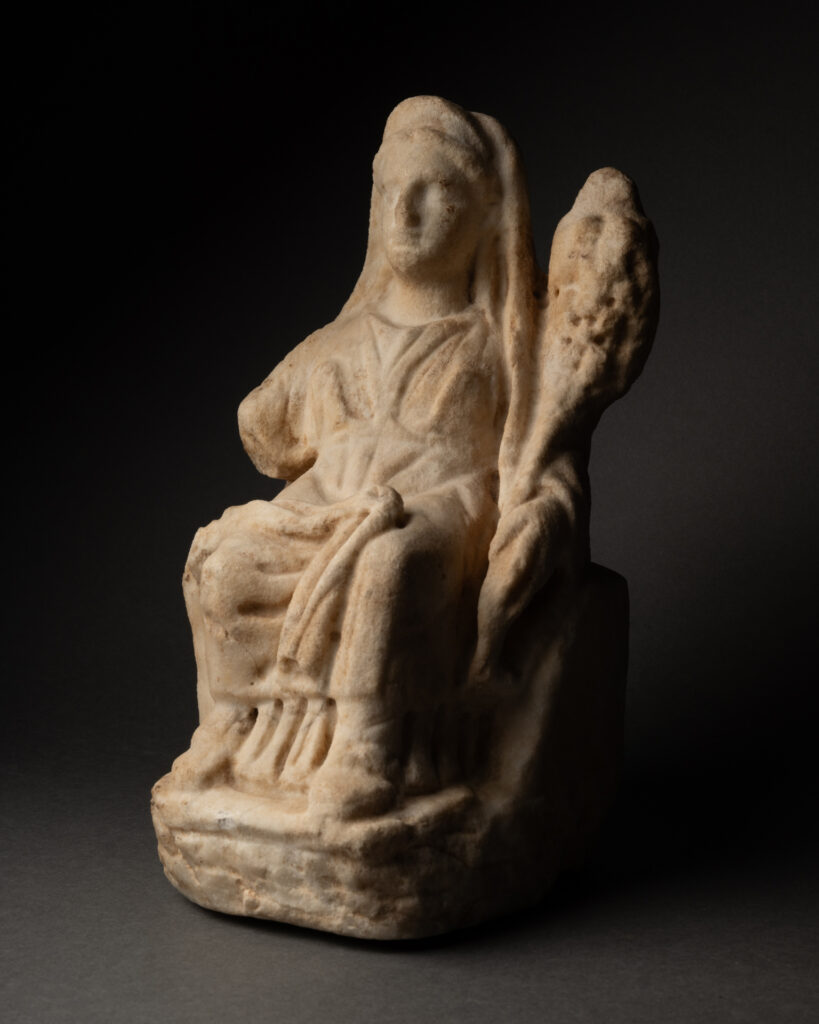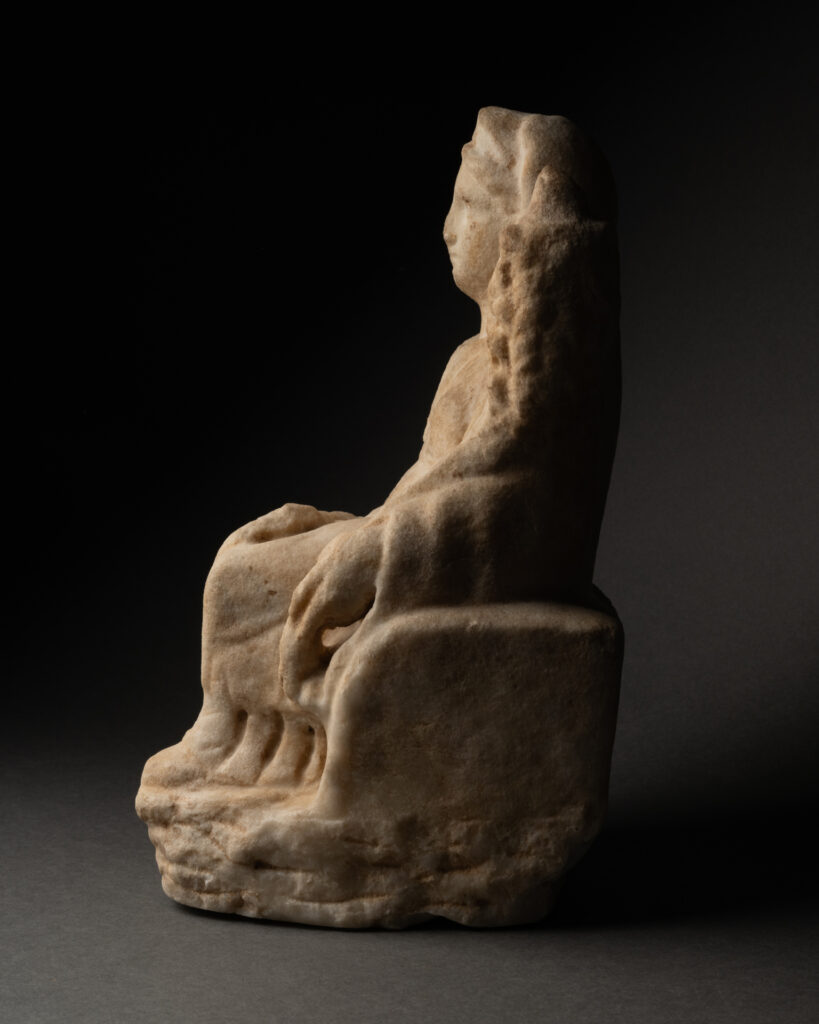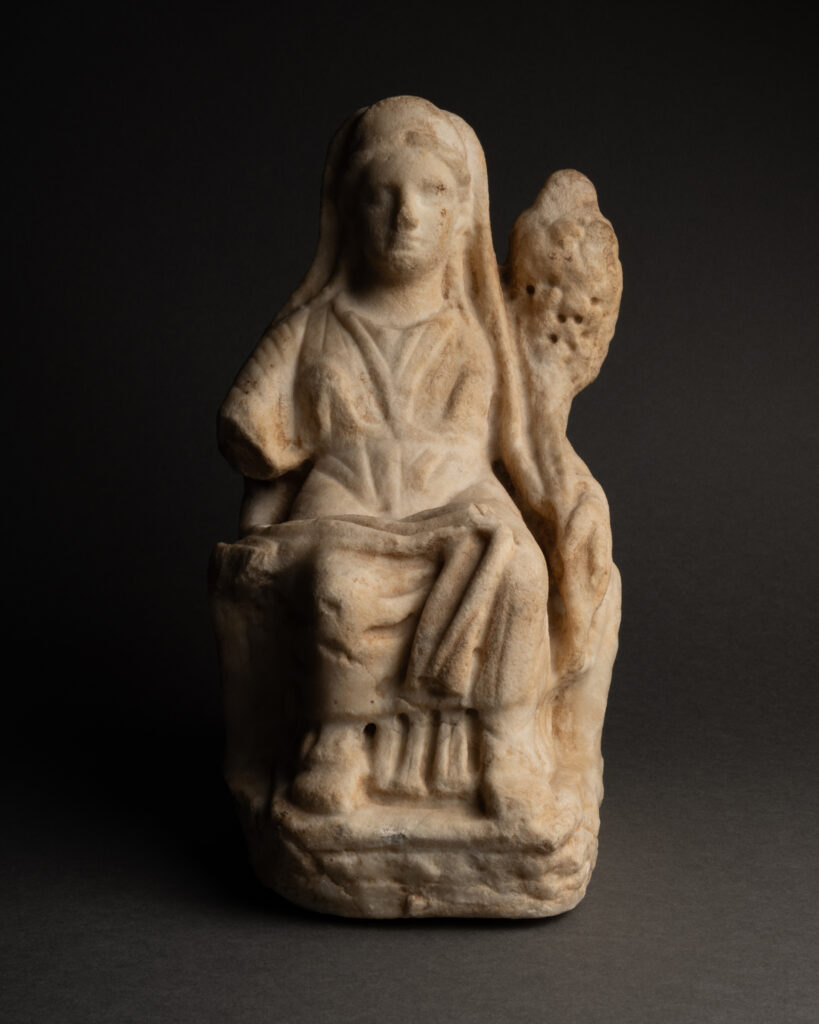This magnificent marble statuette represents the seated goddess Bona Dea. It dates from around the 3rd century A.D. and comes from the Roman Empire.
The seated Bona Dea rests on a throne where she is dressed in a long tunic or robe topped by a palla, secured by a fibula. The goddess is depicted seated, in a majestic position that reflects her divine status and importance. Her right hand is missing. The other is holding a cornucopia.
The head is weathered but retains a serene expression. Her long, straight hair frames her face, on which rests a crown.
Bona Dea, literally “the Good Goddess”, is a deity of Roman mythology associated with fertility, chastity, healing and protection of the home. The goddess confers her protection on women and grants them fertility. Her cult is reserved exclusively for women, with men strictly excluded. Her nickname of “the good goddess” masks her true identity, which remained a secret.
The Bona Dea never leaves her home, and no man has ever seen her or even heard her name, with the exception of her husband Faunus. Legend has it that, after spotting her secretly drinking wine, he became furious and beat her so hard with a myrtle branch that she died. Regretting his action afterwards, he decided to make her immortal. From this myth stems the cult of myrtle by women, who are not allowed to wear myrtle flowers.
Several statuettes of female divinities exist, with attributions that are sometimes difficult to determine. The symbol of the cornucopia makes it easy to recognize the Bona Dea, who is usually seated on a throne. The Louvre houses a multitude of divine statuettes. Take, for example, the terracotta figurine below. The divinity is in majesty, also wearing ample clothing, a crown and holding a cornucopia. There’s a Bona Dea statuette in Nîmes, in the Musée de la Romanité. It features the cornucopia on her right arm.
This statuette of the goddess Bona Dea is exceptional for its rarity and quality of execution. Dedicated to a little-known divinity of the Roman pantheon, this work offers precious testimony to religious practices and the role of female cults in Antiquity. It invites fascinating reflection on little-known aspects of Roman spirituality, while enriching our understanding of our historical heritage.



